Showing Spotlights 65 - 72 of 546 in category All (newest first):
 Since the beginning of the COVID-19 pandemic in 2020, researchers have intensified their efforts to improve the performance of antiviral and antibacterial face masks by adding various functionalities such as metal nanoparticles and herbal extracts to inactivate pathogens, using graphene to make masks photothermal and superhydrophobic, and even using triboelectric nanogenerators to prolong mask lifetime. Based on these works, manufacturers have developed different mask styles and air filtration materials using various nanomaterials.
Since the beginning of the COVID-19 pandemic in 2020, researchers have intensified their efforts to improve the performance of antiviral and antibacterial face masks by adding various functionalities such as metal nanoparticles and herbal extracts to inactivate pathogens, using graphene to make masks photothermal and superhydrophobic, and even using triboelectric nanogenerators to prolong mask lifetime. Based on these works, manufacturers have developed different mask styles and air filtration materials using various nanomaterials.
Mar 14th, 2022
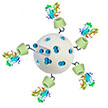 The design of chemical communication networks at the micro/nanoscale is an emergent interdisciplinary topic with potential applications in diverse areas such as sensing, biomedicine, biotechnology, and information and communication technologies. Previously, researchers have demonstrated communication between synthetic microvesicles and one type of cells. Communicating cells from different kingdoms has not been achieved before. Now, scientists report a proof-of-concept study that appears to be the first realization of a programmed cross-kingdom communication involving two species of living cells enabled by nanoparticles.
The design of chemical communication networks at the micro/nanoscale is an emergent interdisciplinary topic with potential applications in diverse areas such as sensing, biomedicine, biotechnology, and information and communication technologies. Previously, researchers have demonstrated communication between synthetic microvesicles and one type of cells. Communicating cells from different kingdoms has not been achieved before. Now, scientists report a proof-of-concept study that appears to be the first realization of a programmed cross-kingdom communication involving two species of living cells enabled by nanoparticles.
Feb 25th, 2022
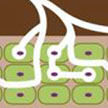 Scientists have designed a nanobot neuroprosthetic that it has been inspired from nature by way of endomyccorhizae - a type of plant/fungus symbiosis, which is over four hundred million years old. During endomyccorhizae, fungi use numerous threadlike projections called mycelium that penetrate plant roots, forming colossal underground networks with nearby root systems. During this process fungi take up vital nutrients while protecting plant roots from infections - a win-win relationship. Consequently, the nano-neuroprosthetic has been named 'endomyccorhizae ligand interface', or 'ELI' for short.
Scientists have designed a nanobot neuroprosthetic that it has been inspired from nature by way of endomyccorhizae - a type of plant/fungus symbiosis, which is over four hundred million years old. During endomyccorhizae, fungi use numerous threadlike projections called mycelium that penetrate plant roots, forming colossal underground networks with nearby root systems. During this process fungi take up vital nutrients while protecting plant roots from infections - a win-win relationship. Consequently, the nano-neuroprosthetic has been named 'endomyccorhizae ligand interface', or 'ELI' for short.
Feb 21st, 2022
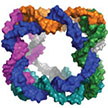 Nucleic acid nanoparticles (NANPs) have found success in a variety of biochemical applications ranging from nanoscaffolds for coordinated delivery of multiple therapeutic nucleic acids (TNAs) to potent immunoregulators and biosensors. Despite their potential, the true viability of NANPs and TNAs is limited by their relative chemical instability and sensitivity to higher temperatures. Shipping and transportation of NANPs and TNAs currently relies on a cold-chain storage. Newly developed methods could reduce the need for cold chain storage and dramatically improve vaccine shelf life.
Nucleic acid nanoparticles (NANPs) have found success in a variety of biochemical applications ranging from nanoscaffolds for coordinated delivery of multiple therapeutic nucleic acids (TNAs) to potent immunoregulators and biosensors. Despite their potential, the true viability of NANPs and TNAs is limited by their relative chemical instability and sensitivity to higher temperatures. Shipping and transportation of NANPs and TNAs currently relies on a cold-chain storage. Newly developed methods could reduce the need for cold chain storage and dramatically improve vaccine shelf life.
Feb 10th, 2022
 Being a relatively young field, Bionanotechnology is often neglected within undergraduate and postgraduate curriculum. With an increasing number of researchers and professionals of different backgrounds coming into the field, there is a clear need to have learning platforms that cover techniques, strategies and methods that characterise the design of bionano structures. In September 2021, Cambridge Advance Online, a new educational initiative created between the University of Cambridge and Cambridge University Press and Assessment, launched a 6-week online course about Bionanotechnology: Bionanotechnology from Theory to Practice.
Being a relatively young field, Bionanotechnology is often neglected within undergraduate and postgraduate curriculum. With an increasing number of researchers and professionals of different backgrounds coming into the field, there is a clear need to have learning platforms that cover techniques, strategies and methods that characterise the design of bionano structures. In September 2021, Cambridge Advance Online, a new educational initiative created between the University of Cambridge and Cambridge University Press and Assessment, launched a 6-week online course about Bionanotechnology: Bionanotechnology from Theory to Practice.
Jan 11th, 2022
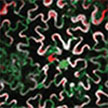 The development of plant genetic engineering lags behind the development of animal genetic engineering. Plant cells differ from animal cells in several aspects, a major one being that, in addition to the cell membrane, they possess a wall surrounding them to provide mechanical and structural support. In recent years, breakthroughs in nanotechnology for genetic engineering have provided more favorable tools for the genetic transformation of plants. A review summarizes the types of gene carriers used in plant genetic transformation, the ways of combining with foreign genes, and the differences and advantages compared with earlier traditional transgenic methods.
The development of plant genetic engineering lags behind the development of animal genetic engineering. Plant cells differ from animal cells in several aspects, a major one being that, in addition to the cell membrane, they possess a wall surrounding them to provide mechanical and structural support. In recent years, breakthroughs in nanotechnology for genetic engineering have provided more favorable tools for the genetic transformation of plants. A review summarizes the types of gene carriers used in plant genetic transformation, the ways of combining with foreign genes, and the differences and advantages compared with earlier traditional transgenic methods.
Jan 10th, 2022
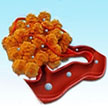 The diversity, complexity, and heterogeneity of malignant tumor seriously undermine the efficiency of mono-modal treatment. Recently, multi-modal therapeutics with enhanced antitumor efficiencies have attracted increasing attention. However, designing a nanotherapeutic platform with uniform morphology in nanoscale that integrates with efficient chem-/sono-/photo-trimodal tumor therapies is still a great challenge. Reseaerchers now designed a nanotherapeutic platform with uniform morphology in nanoscale that integrates with efficient chem-/sono-/photo-trimodal tumor therapies.
The diversity, complexity, and heterogeneity of malignant tumor seriously undermine the efficiency of mono-modal treatment. Recently, multi-modal therapeutics with enhanced antitumor efficiencies have attracted increasing attention. However, designing a nanotherapeutic platform with uniform morphology in nanoscale that integrates with efficient chem-/sono-/photo-trimodal tumor therapies is still a great challenge. Reseaerchers now designed a nanotherapeutic platform with uniform morphology in nanoscale that integrates with efficient chem-/sono-/photo-trimodal tumor therapies.
Oct 29th, 2021
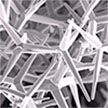 Researchers have developed an antiviral dressing material with visible-light-activated sterilizing properties that enables physical and chemical protection against viral agents like Herpes simplex. They re-engineered a common additive agent found in sunscreen (zinc oxide) to be self-sterilizing within a non-woven fibrous mats for herpes virus treatment. The self-sterilizing function creates a 'green' associated oxidant hydrogen peroxide (hydrogen peroxide), capable of eliminating harmful bacteria and viruses.
Researchers have developed an antiviral dressing material with visible-light-activated sterilizing properties that enables physical and chemical protection against viral agents like Herpes simplex. They re-engineered a common additive agent found in sunscreen (zinc oxide) to be self-sterilizing within a non-woven fibrous mats for herpes virus treatment. The self-sterilizing function creates a 'green' associated oxidant hydrogen peroxide (hydrogen peroxide), capable of eliminating harmful bacteria and viruses.
Oct 12th, 2021
 Since the beginning of the COVID-19 pandemic in 2020, researchers have intensified their efforts to improve the performance of antiviral and antibacterial face masks by adding various functionalities such as metal nanoparticles and herbal extracts to inactivate pathogens, using graphene to make masks photothermal and superhydrophobic, and even using triboelectric nanogenerators to prolong mask lifetime. Based on these works, manufacturers have developed different mask styles and air filtration materials using various nanomaterials.
Since the beginning of the COVID-19 pandemic in 2020, researchers have intensified their efforts to improve the performance of antiviral and antibacterial face masks by adding various functionalities such as metal nanoparticles and herbal extracts to inactivate pathogens, using graphene to make masks photothermal and superhydrophobic, and even using triboelectric nanogenerators to prolong mask lifetime. Based on these works, manufacturers have developed different mask styles and air filtration materials using various nanomaterials.
 Subscribe to our Nanotechnology Spotlight feed
Subscribe to our Nanotechnology Spotlight feed





